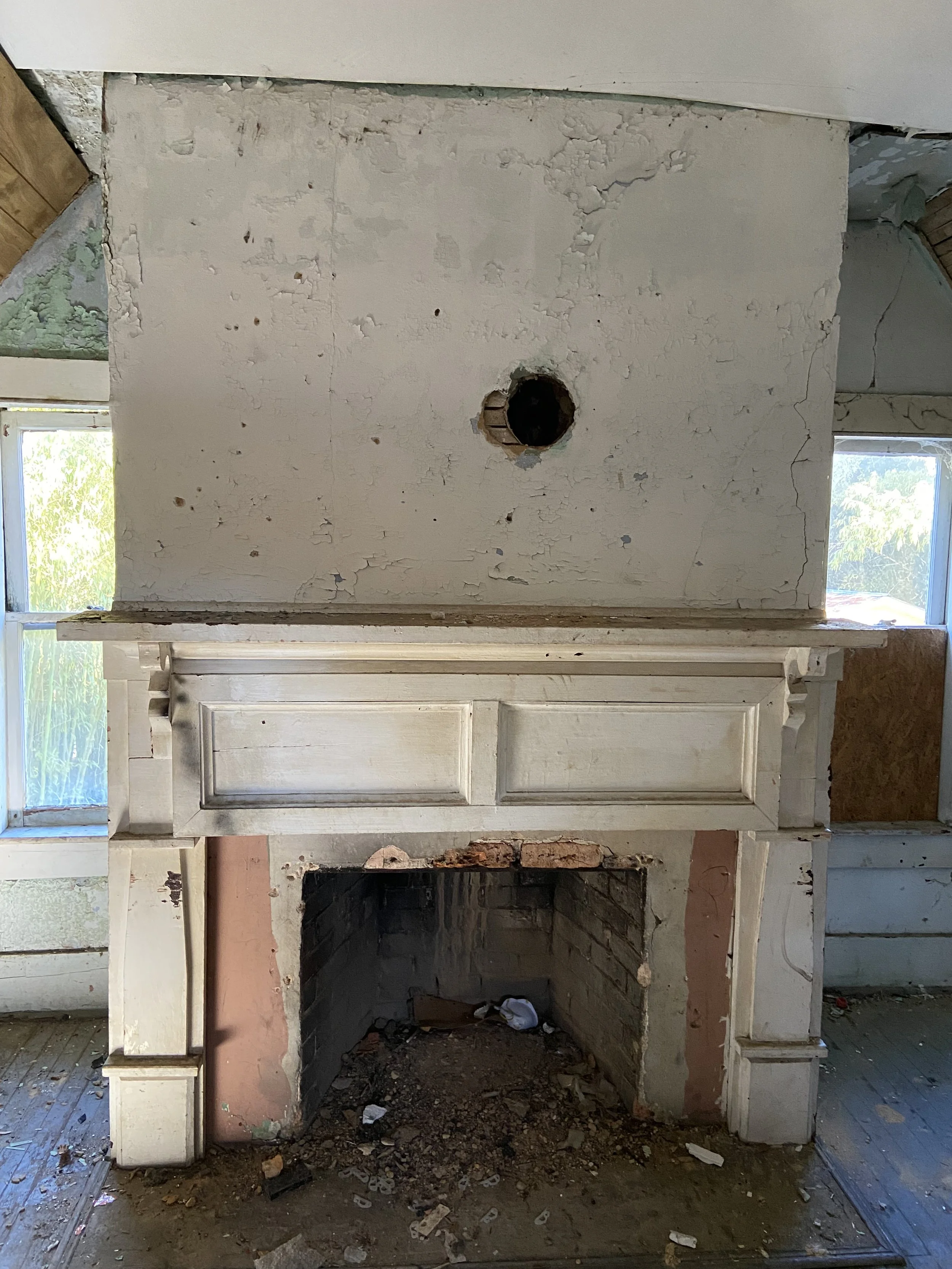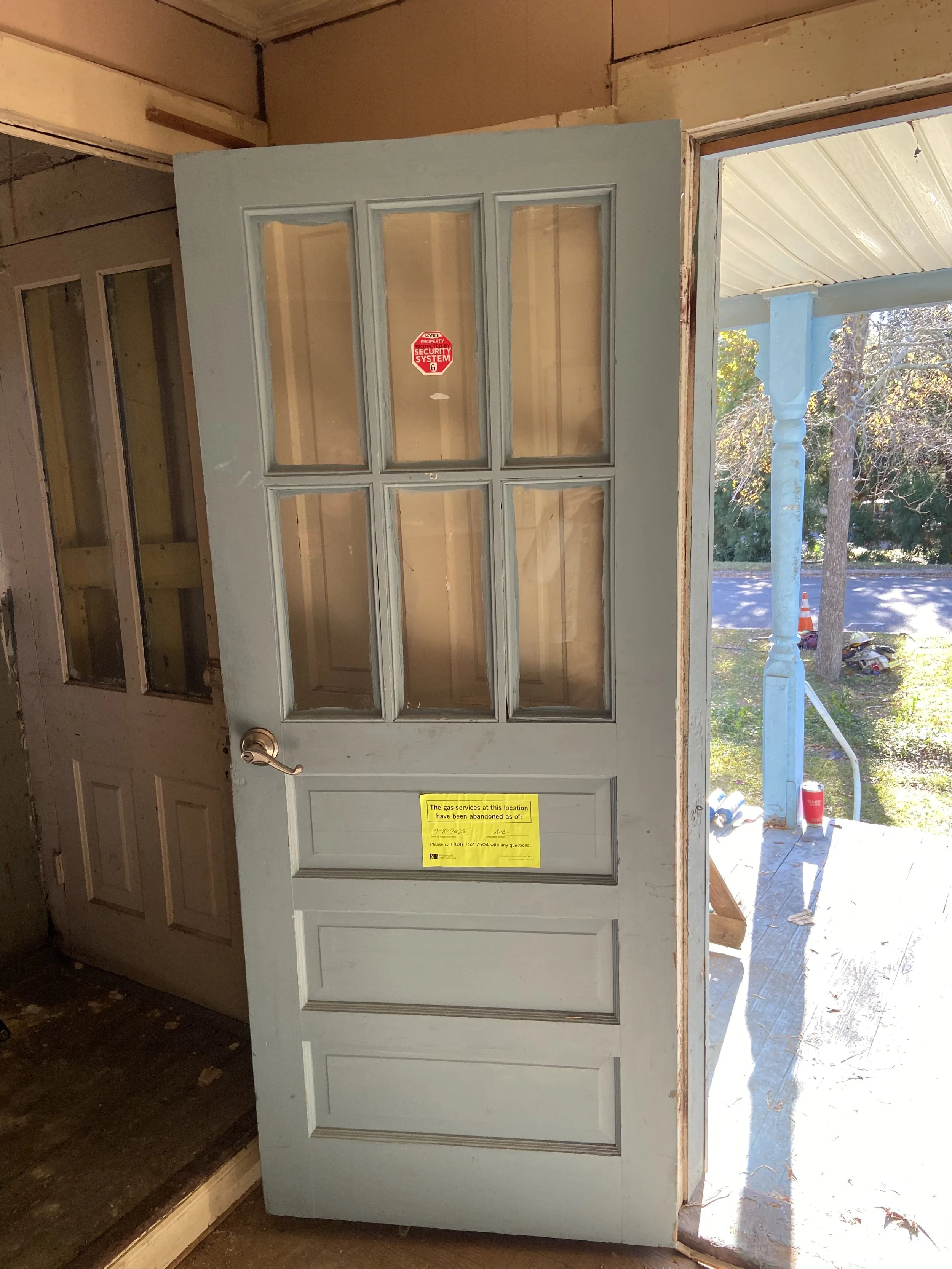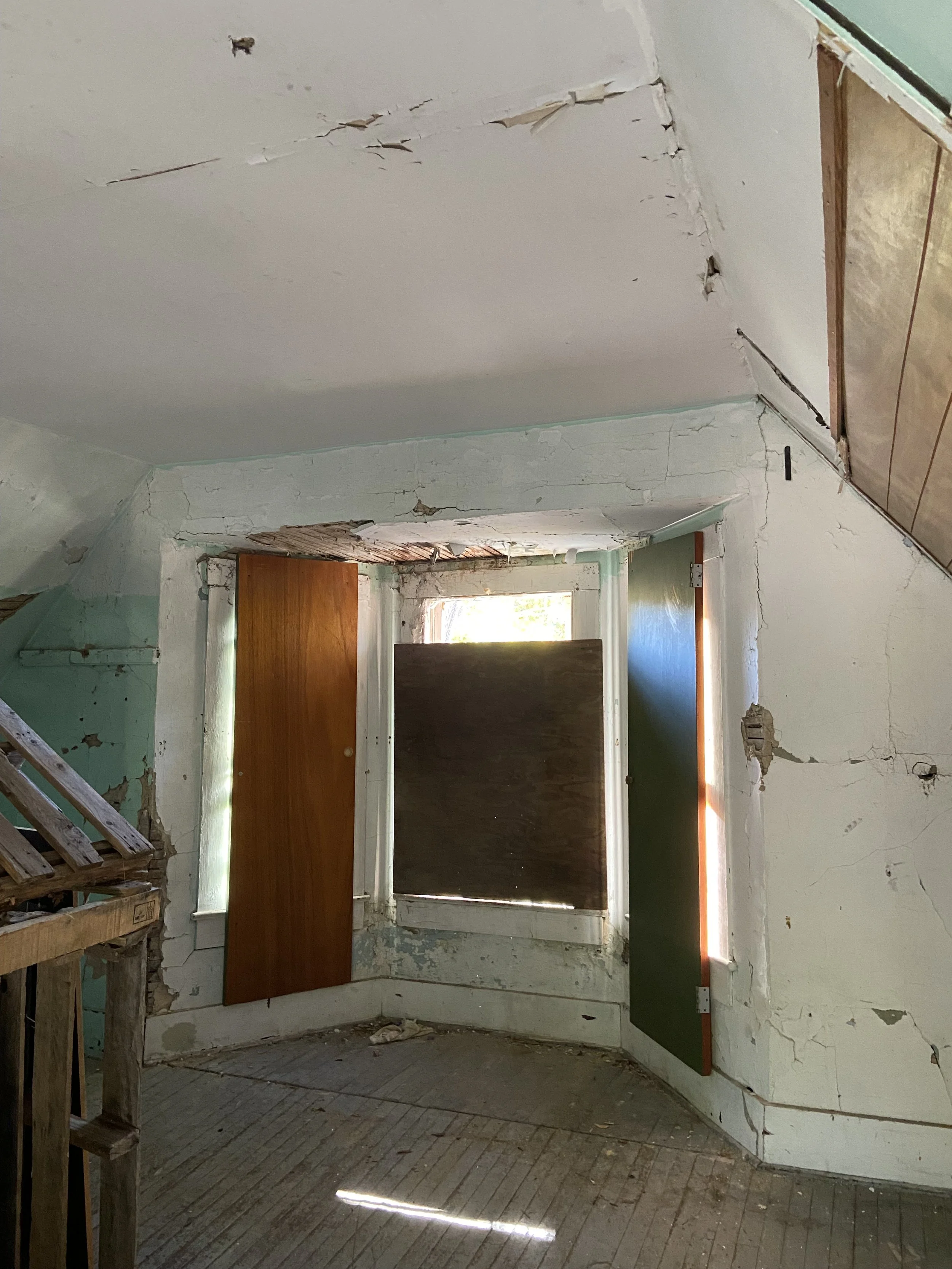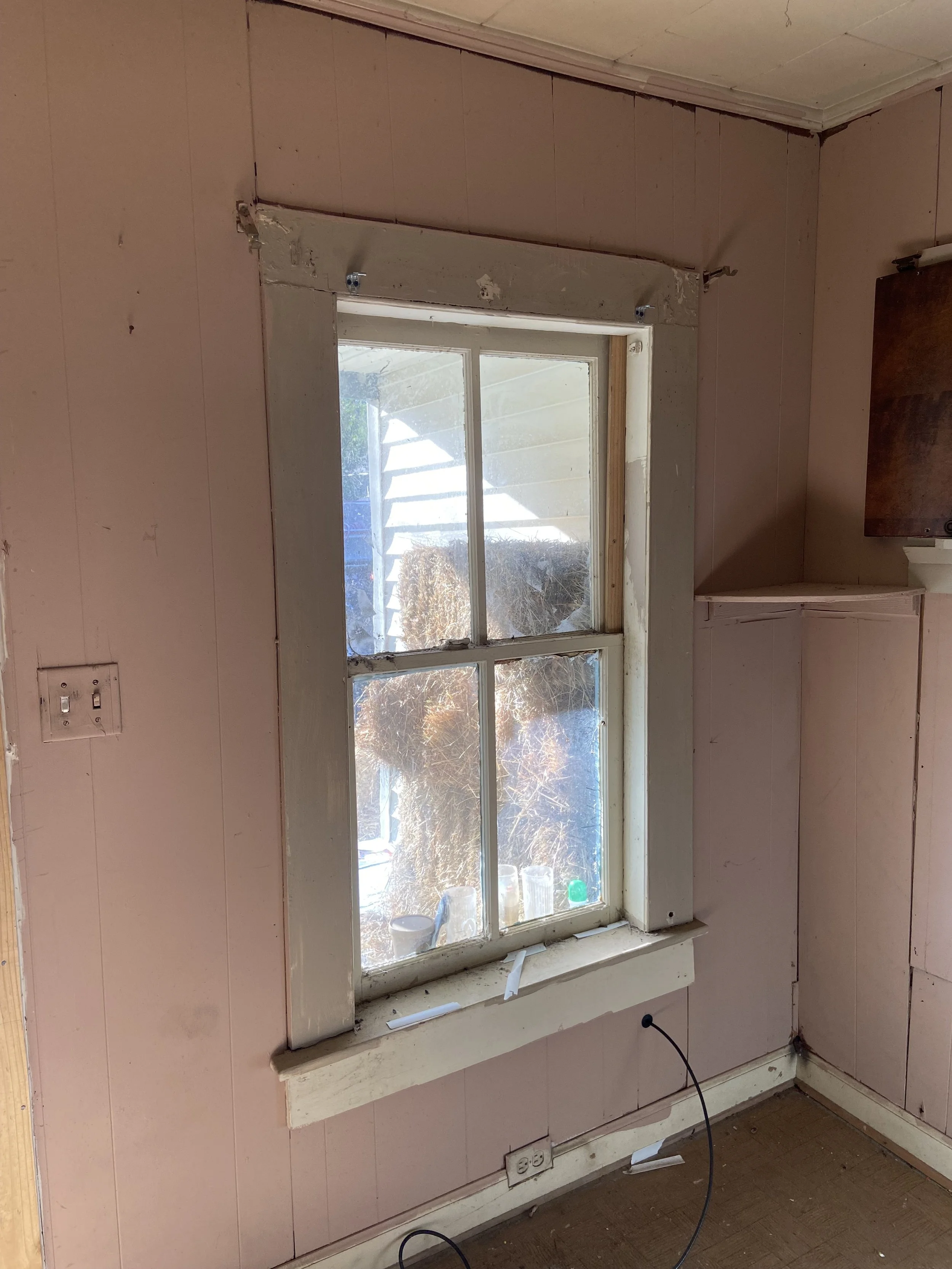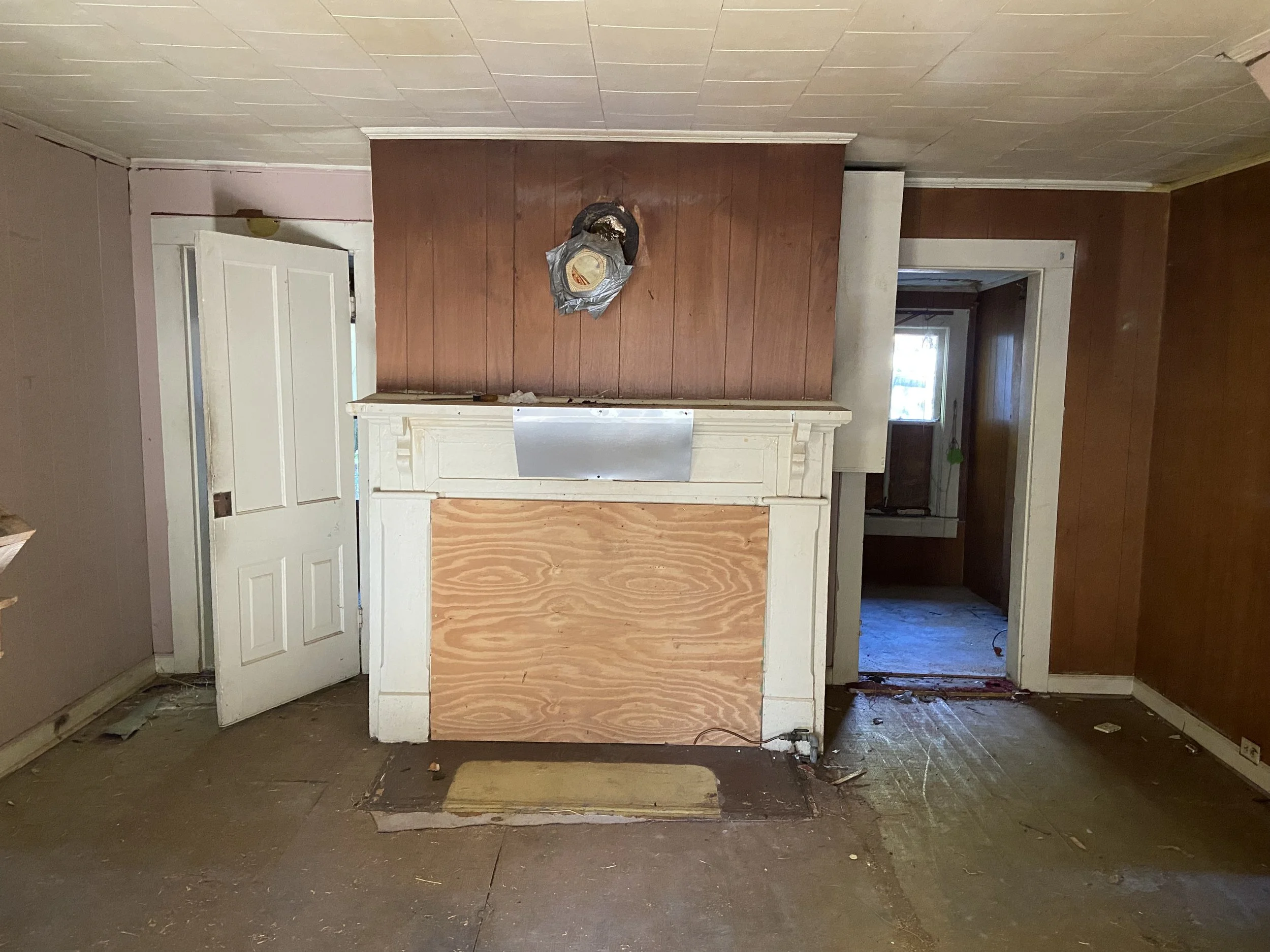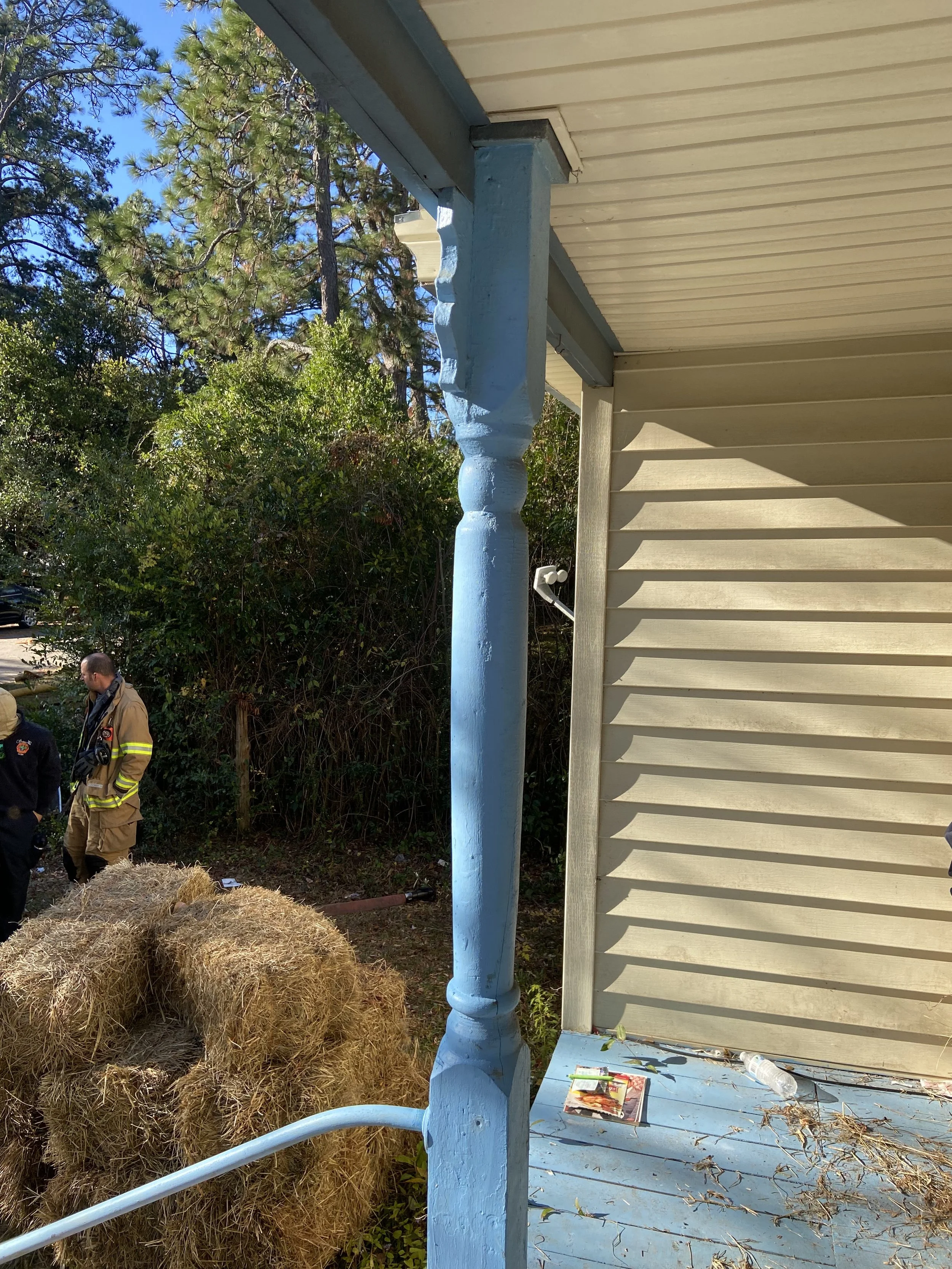Burning Down the House Again
On November 10, 2025, another historic house went up in flames.
Built in 1895 by prominent early resident Laura Warren, the Warren-Dutton-Wells House was a contributing Queen Anne structure to the Southern Pines National Register District and featured a prominent front gable with a bay window and wrap around porch. It also contained two late Victorian mantles and a number period doors and windows. Despite being clad in vinyl, the original vinyl could be seen in some areas as present.
Although neglected since the passing of its previous owner last year, from initial observation the building looks structurally sound and a worthy candidate for rehabilitation, including being a candidate for possibly both state and federal rehabilitation tax credits. After the fire at the 1887 Philander Pond House on Oct 16, Southern Pines has now lost two of its nineteenth century cottages in less than a month: one an accident, another completely avoidable.
The Warren-Dutton-Wells House in 2025
Members of The Pines Preservation Guild attempted to reach out to the current owner of the Warren-Dutton-Wells Cottage in attempt to move, salvage, or find an alternative option to the prescribed burn. We received no reply. While within the National Register Historic District, the cottage is not within the Southern Pines Local Historic District, so there was no ability for the town to delay the demolition or for the fire department to deny the request for the prescribed burn.
We as a county should always opt for saving, moving, or salvaging structures before burning them.⠀⠀
While we could have worked to find a new owners for this building or even move it, at the very least there should have been a salvage effort. The market for replacement parts for historic buildings and fixtures is booming right now with the massive surge of people rehabilitating old homes. They need those bathroom fixtures thought of as dated. They will pay top dollar for historic windows, mantles, and doors. Destroying irreplaceable features and fixtures to send to the dump or to burn into the atmosphere is not only wasteful, it’s incredibly unsustainable.
The Warren-Dutton-Wells House in 1980
image via Ann C Alexander
Housing, especially affordable housing, is at an extreme shortage in Moore County and this structure could have been part of a sustainable solution.
The very last resort should have been offering this historic structure as a prescribed burn. We support and love our local firefighters, however this not only is a waste of historic materials, but the old-growth wood that comprises these buildings doesn’t burn the way new construction does. The increase of heritage buildings in Moore County being offered as controlled burns is mainly attributed to owners not wanting to pay for demolition costs. If the municipalities in Moore County want to be seen as truly protecting their residents, then this practice needs to be discouraged. Not only does it not provide real-life training for firefighters due to the historic building materials that burn differently, but exercises like these release several unnecessary carcinogenic materials into the atmosphere, even when asbestos remediation have been done. Devina Horvath, Project Manager Specializing in Environmental Due Diligence at AKTPeerless Environmental Services, notes that with a controlled burn "incinerators, dioxins, and lead from the ash heavily impact soil in a radius from the burn area. In a residential neighborhood where there are neighbors, [prescribed building burns are] unconscionable due to the impacts to their health.” Numerous observers of Monda’s burn noted the adverse impact of inhaling the smoke from the burning of the vinyl siding and any lead paint. This is not promoting a healthy environment for residents. w\We should always opt for saving, moving, or salvaging structures before burning them.⠀
The Pines Preservation Guild has crafted the following proposal for how the municipalities in Moore County can deal with controlled burns:
Take steps similar to what was done in Asheville and Buncombe county. Their Fire Departments no longer take part in prescriptive burns as they constructed a training facility for these very exercises. The Southern Pines Fire Department Station #2 on US 22 could become a joint training location county-wide for live fire training. A portion of the cost for a demolition permit in the county could go towards helping to offset the cost of updating the station to accommodate this kind of training. At the very least, an ordinance could be passed by local municipalities that prohibits prescribed burns within their National Register Historic Districts.
The introduction of local — county, or municipality-driven — tax incentives to owners of properties over 50 years old for restoration and rehabilitation. While most of these structures are already eligible for state or federal tax credits, many owners do not know about their availability, and most of the existing historic districts are woefully out of date, leaving many heritage buildings at risk. Being informed of these options when dealing with planning departments would give owners a multitude of options and help increase the preservation of the heritage structures that help create our community.
Create and foster a culture of adaptive reuse, and incorporation of existing heritage buildings into proposed developments. Growth and development is happening, but it needs to be done in a manner so future generations don't look back and say "what did they do!?" Existing structures often require less changes in infrastructure, less waste, and are easier to adapt since their existing structure and systems already exist. Increasing the cost of demolition permits should be considered by all municipalities to help decrease demolitions, and again, introduce tax incentives to help encourage retention and reuse.
Housing, especially affordable housing, is at an extreme shortage in this county and this structure could have been part of a sustainable solution. Southern Pines recently had a meeting proposing a text amendment to the Comprehensive Plan about missing middle housing. Not every resident wants or can afford the $400,000, 3,000 sq ft homes currently being built at breakneck speed. This building could have found new life on a new parcel as a small affordable home for a young family starting out or for retirees on a fixed income, both which are being priced out of Moore County at a rapid pace. It is always important to remember that the old building that one sees as an inconvenience is another’s dream structure.





